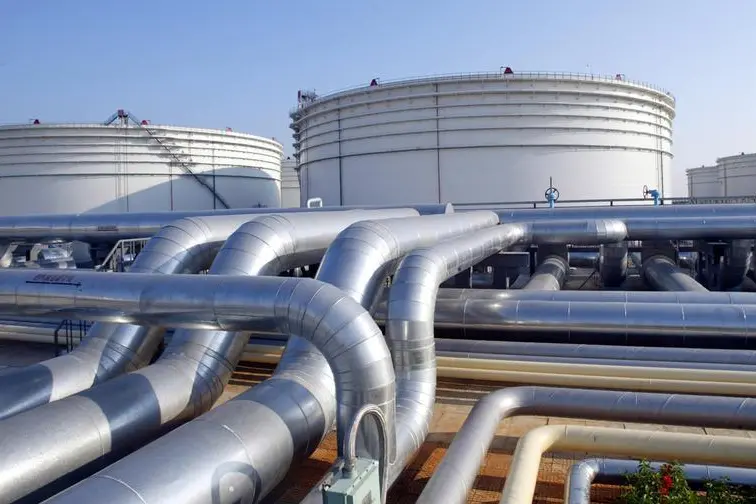PHOTO
LAUNCESTON, Australia- China's imports of major commodities ended last year with a bang, with strong gains showing the appetite of the world's largest importer of natural resources remains robust despite the trade dispute with the United States.
The exception was coal, but December's paltry imports of the polluting fuel were the result of cargoes not being cleared by customs in response to Beijing's wishes to put a cap on purchases from overseas.
Once again the standout was crude oil, with December imports coming in at 10.78 million barrels per day (bpd), down slightly from November's record 11.13 million bpd.
The total for the year was 10.2 million bpd, up 9.5% from 2018 and the 17th straight year that annual imports have set a record high.
The increase in crude imports has been largely driven by the start up of two massive new refineries, with a combined capacity of 800,000 bpd, meaning that much of the increase last year was structural in nature.
However, it is also worth noting that storage flows into both commercial and strategic stockpiles were likely around 900,000 bpd, a strong figure that may not be repeated in 2020, especially if the strategic inventories are close to full.
A further factor was the increase in exports of refined products, which gained 14% to 66.85 million tonnes in 2019 from 2018, according to customs data.
Using the BP Plc conversion factor of 8 barrels of product per tonne, it means Chinese refiners exported about 1.46 million bpd of fuels such as gasoline, diesel and jet kerosene in 2019.
Hot on the heels of crude as a top import performer came natural gas, with both pipeline and liquefied natural gas (LNG) arrivals totalling 9.45 million tonnes in December, the third-highest on record.
For 2019, natural gas imports rose 6.9% to 95.56 million tonnes, down from the 31.9% growth rate recorded in 2018.
The marked slowing in natural gas imports growth is somewhat deceiving as it was improbable that China could continue to increase its imports at the breakneck pace of recent years.
It is possible that 2019 becomes the new normal for China's natural gas imports, with 2020 likely to show reasonable growth, boosted largely by the ramp up of supplies from a new pipeline from Russia, as well as increased LNG re-gasification capacity.
Rounding off the energy complex is coal, and the very weak 2.77 million tonnes of imports in December can safely be ignored.
The low figure, around a tenth of the usual monthly total, is the result of cargoes not being cleared by customs in December in a bid to hold down 2019 imports to levels around the same as those in 2018.
Despite the effort, total imports for 2019 were 299.67 million tonnes, a smidgen below 300 million tonnes and 6.6% higher than the 281.23 million tonnes in 2018.
It is likely that coal imports will start the new year strongly, as the December arriving cargoes are cleared, and also as utilities and traders boost imports after winter weather disrupted the transport of domestic coal.
COPPER, IRON END STRONGLY
Turning to metals, imports of copper ended 2019 on a high, with 527,000 tonnes of unwrought copper arriving in December, the highest monthly total since March 2016 and up 9.1% from November.
Overall, imports of unwrought copper for 2019 were 4.98 million tonnes in 2019, down 6% from 2018's record 5.3 million tonnes.
But it is worth noting that imports were stronger in the second half than the first, suggesting the Chinese economy was adjusting to the blow from U.S. trade tariffs and that the government's stimulus measures were starting to bear fruit.
Another factor is the changing nature of China's copper imports, with ores and concentrates playing a more vital role as domestic smelting capacity increases.
Imports of copper ores and concentrates rose 11.6% to 21.99 million tonnes in 2019 from 2018, the customs data showed.
Iron ore also had a strong conclusion to 2019, with December imports at 101.3 million tonnes, the highest in 27 months and up 11.7% from November.
For the year as a whole, iron ore imports were 1.069 billion tonnes, up 0.5% from 2018 and not far off the record 1.075 billion clocked in 2017.
That annual growth rate may look modest, but it's worth noting that imports in the first half were constrained by the loss of volumes from the top exporters Australia and Brazil, after weather disruptions in Australia and a fatal dam collapse in Brazil that led to safety closures of mines.
Putting together China's imports of major commodities shows that while the year as a whole was strong, the second half was better than the first.
This is perhaps an indication that the impact of the tariff dispute with the United States is fading amid economic adjustments and official stimulus efforts.
(Editing by Muralikumar Anantharaman) ((clyde.russell@thomsonreuters.com)(+61 437 622 448)(Reuters Messaging: clyde.russell.thomsonreuters.com@reuters.net))












